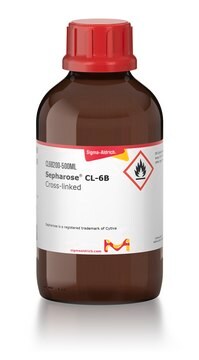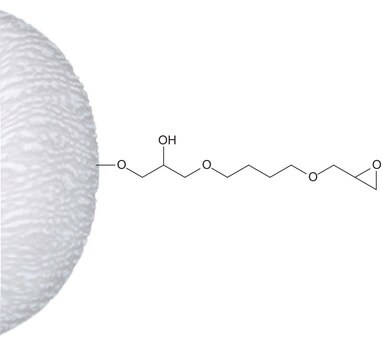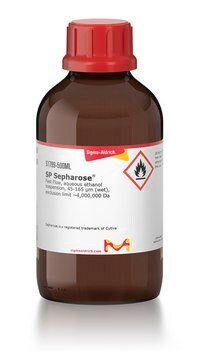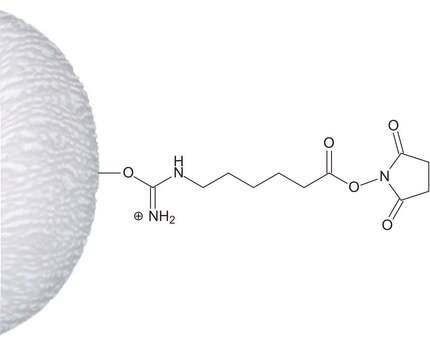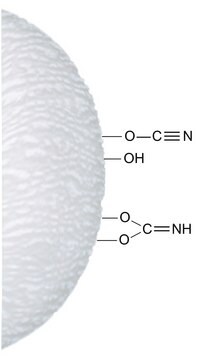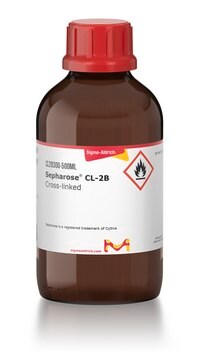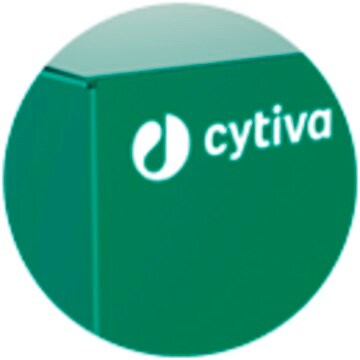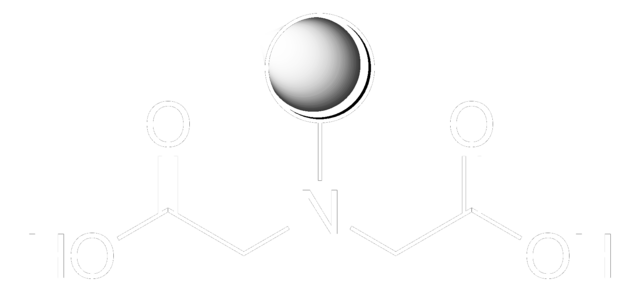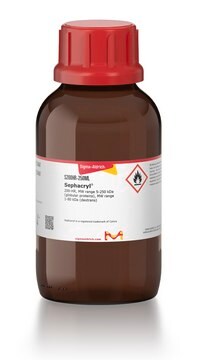6B100
Sepharose™ 6B
6% Beaded Agarose, 45-165 μm (wet), fractionation range 10,000-1,000,000 Da (dextrans)
Synonyme(s) :
Agarose, Beaded
About This Item
Produits recommandés
Source biologique
algae (marine)
Forme
suspension
Technique(s)
affinity chromatography: suitable
Matrice
6% agarose
Taille des particules
45-165 μm (wet)
Dimension de pores
10,000-1,000,000 Da fractionation range (dextrans)
10,000-4,000,000 Da fractionation range (globular proteins)
pH
4—9
Température de stockage
2-8°C
Chaîne SMILES
OC[C@H]1O[C@@H](O[C@@H]2[C@@H]3CO[C@H]2[C@H](O)[C@@H](O3)O[C@H]4[C@@H](O)[C@@H](CO)O[C@@H](O[C@@H]5[C@@H]6CO[C@H]5[C@H](O)[C@H](O)O6)[C@@H]4O)[C@H](O)[C@@H](O)[C@H]1O
InChI
1S/C24H38O19/c25-1-5-9(27)11(29)12(30)22(38-5)41-17-8-4-36-20(17)15(33)24(40-8)43-18-10(28)6(2-26)39-23(14(18)32)42-16-7-3-35-19(16)13(31)21(34)37-7/h5-34H,1-4H2/t5-,6-,7+,8+,9+,10+,11+,12-,13+,14-,15+,16-,17-,18+,19+,20+,21-,22+,23+,24+/m1/s1
Clé InChI
MJQHZNBUODTQTK-WKGBVCLCSA-N
Vous recherchez des produits similaires ? Visite Guide de comparaison des produits
Description générale
Autres remarques
Informations légales
Remplacé(e)(s) par
Mention d'avertissement
Warning
Mentions de danger
Conseils de prudence
Classification des risques
Flam. Liq. 3
Code de la classe de stockage
3 - Flammable liquids
Classe de danger pour l'eau (WGK)
WGK 1
Point d'éclair (°F)
100.4 - 109.4 °F
Point d'éclair (°C)
38 - 43 °C
Faites votre choix parmi les versions les plus récentes :
Déjà en possession de ce produit ?
Retrouvez la documentation relative aux produits que vous avez récemment achetés dans la Bibliothèque de documents.
Les clients ont également consulté
Notre équipe de scientifiques dispose d'une expérience dans tous les secteurs de la recherche, notamment en sciences de la vie, science des matériaux, synthèse chimique, chromatographie, analyse et dans de nombreux autres domaines..
Contacter notre Service technique

